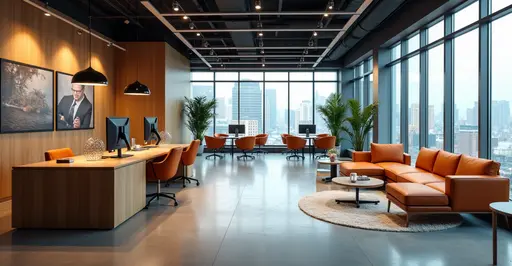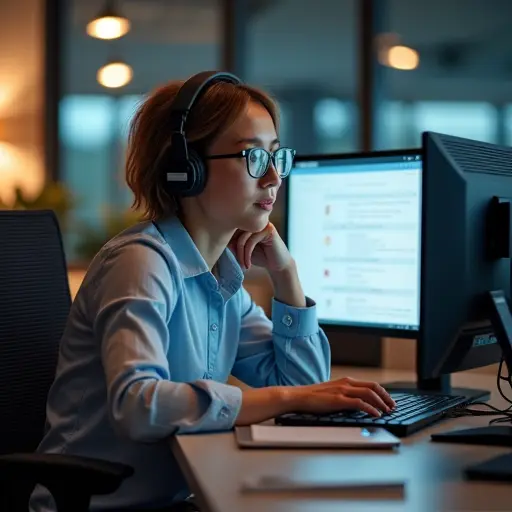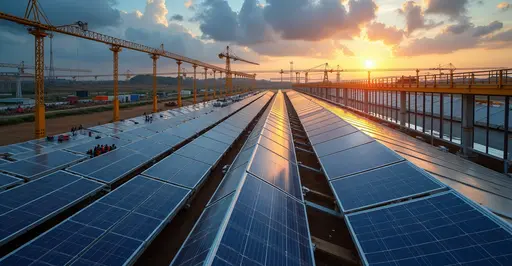
The Evolution of Workspace Design in the Post-Pandemic Era
As hybrid work becomes the new standard across global metropolises, architects and designers are fundamentally reimagining office spaces to accommodate flexible employee schedules. Major cities including New York, London, Tokyo, and Amsterdam are witnessing a dramatic transformation in workplace design that prioritizes adaptability, collaboration, and employee well-being.
Adaptive Workspace Solutions
The traditional 9-to-5 office model has been replaced by dynamic environments that support varying work patterns. Companies are investing in modular furniture, movable partitions, and multi-functional spaces that can be quickly reconfigured based on daily needs. According to recent industry reports, over 70% of major corporations in metropolitan areas have implemented some form of hybrid work policy, driving demand for innovative office designs.
Soundproof pods and acoustic meeting booths have become essential components, providing private spaces for focused work and video conferences amidst open-plan layouts. Companies like WeWork and other flexible workspace providers are leading this charge, offering solutions that range from individual phone booths to collaborative meeting spaces accommodating 2-6 people.
Technology Integration and Smart Offices
Advanced technology integration is at the heart of modern office redesign. IoT sensors monitor occupancy levels, air quality, and energy consumption, while smart booking systems allow employees to reserve workspaces through mobile apps. This data-driven approach enables companies to optimize space utilization and reduce real estate costs by up to 30% according to recent commercial real estate studies.
Video conferencing capabilities have been seamlessly integrated into meeting spaces, with high-quality audio-visual equipment becoming standard. Many new office designs feature hybrid meeting rooms equipped with multiple cameras, advanced microphones, and interactive displays to ensure remote participants have equal engagement opportunities.
Health, Safety and Sustainability Focus
Post-pandemic design priorities continue to emphasize health and safety measures. Enhanced ventilation systems, antimicrobial surfaces, and touchless technology have become permanent features in office redesigns. Nearly 85% of new office projects in major cities now incorporate biophilic design elements, including living walls, natural lighting, and outdoor workspaces to improve employee well-being.
Sustainability has emerged as a critical consideration, with energy-efficient lighting, smart climate control, and recycled materials being incorporated into office designs. Many companies are pursuing LEED certification and other green building standards as part of their corporate sustainability initiatives.
Urban Impact and Commercial Real Estate
The shift to hybrid work is significantly impacting urban commercial real estate markets. While overall office vacancy rates have increased in some cities, demand for premium, well-located spaces with modern amenities remains strong. Landlords and property developers are responding by upgrading existing buildings and designing new constructions specifically for hybrid work models.
Coworking spaces have evolved to offer more specialized services, including day passes, meeting room rentals, and dedicated team spaces. This flexibility allows companies to maintain a physical presence without committing to long-term leases, providing financial flexibility in uncertain economic conditions.
Future Outlook and Emerging Trends
Looking ahead to 2025 and beyond, office design is expected to continue evolving toward even more flexible and human-centric approaches. The integration of artificial intelligence for space optimization, augmented reality for collaborative design, and advanced materials for improved acoustics and air quality represent the next frontier in workplace innovation.
As remote work becomes permanently embedded in corporate culture, the purpose of physical office spaces is shifting from daily workstations to collaboration hubs and cultural centers. This transformation requires ongoing adaptation from architects, designers, and facility managers to create environments that truly support the future of work.

 Nederlands
Nederlands
 English
English
 Français
Français
 Deutsch
Deutsch
 Español
Español
 Português
Português








